Design system development Dubai
Branding > VISUAL IDENTITY & DESIGN > Design System Development
Expert Design System Development
We build scalable, brand-aligned design systems for digital teams in Dubai — ensuring consistency, speed, and cross-platform visual excellence.
Built for Scale
We create design systems that grow with your team and tech stack, future-ready from day one.
Code-Ready Outputs
Designs that aren’t just pretty—they’re componentized, dev-friendly, and implementation-ready.
Dubai-Centric UX
Culturally attuned and visually polished for brands targeting audiences in Dubai and beyond.
Why Choose Us
Why Dubai Teams Choose Our Systems
We craft modular design systems that accelerate product teams, reduce friction, and ensure consistent digital experiences across every touchpoint.
“They built a system that scaled with us—flawless execution.”
Javed Ortiz
―Head of Product
Design System Development in Dubai
Design System Development in Dubai
In the ever-evolving digital landscape of Dubai, building design systems has moved from a best practice to a fundamental necessity. As businesses scale across platforms and customer touchpoints multiply, consistency in design becomes paramount. Octopus recognizes that in Dubai—a city synonymous with ambition, scale, and innovation—a design system isn’t just a set of rules. It’s a strategic infrastructure that aligns visual identity, brand voice, and technical functionality into one scalable framework. Whether you are a government portal serving millions or a fintech startup launching a new mobile app, a design system ensures coherence, speed, and adaptability across your digital ecosystem.
The Strategic Importance of Design Systems
At its core, a design system is a single source of truth for design and development teams. It houses components, style guides, pattern libraries, and coded elements that define the user interface and experience. In Dubai, where user bases are diverse and expectations high, design systems serve as the backbone of digital product delivery. They reduce redundancies, eliminate inconsistencies, and streamline collaboration. More importantly, they create a repeatable process that scales. At Octopus, we approach design systems not as a one-time project but as a living organism—built to evolve, adapt, and grow with your product and audience.
Our methodology focuses on marrying the strategic with the functional. We begin by auditing your current digital landscape—identifying inconsistencies, gathering feedback, and defining key use cases. This allows us to build a system that not only looks unified but performs under the pressure of real-world use. From typography and iconography to component behaviors and code standards, every element is codified with intent and flexibility.
Cultural and Technical Relevance in the Dubai Market
Dubai’s market is unique. It is home to a multicultural population, a tech-savvy youth demographic, and a government that is aggressively pursuing digital transformation. Design systems here must cater to multiple languages, accessibility standards, and cultural expectations. Octopus designs with this context in mind. We integrate bilingual capabilities into every component, ensuring that right-to-left (RTL) text alignment works seamlessly alongside left-to-right layouts. Typography choices are evaluated for cross-script compatibility, ensuring both Arabic and Latin fonts maintain brand tone and legibility.
Color palettes are selected not only for brand harmony but for cultural resonance and accessibility compliance. Interface elements are tested on real users from Dubai’s diverse population segments, ensuring usability across age groups, literacy levels, and device types. This sensitivity to context ensures that the design system we deliver doesn’t just work—it works for your audience.
Building Modular and Scalable Components
The heart of a design system lies in its components. At Octopus, we create atomic design systems based on reusable building blocks. Buttons, cards, modals, headers, and forms are designed once and deployed everywhere. These modules adapt responsively, perform consistently, and remain accessible regardless of platform or device. In Dubai’s fast-paced business environment, this modularity reduces development time and speeds up iteration cycles.
Each component in our system comes with coded specifications, usage guidelines, accessibility notes, and examples. These aren’t abstract guidelines—they’re production-ready assets engineered for performance. Whether embedded in Figma, Storybook, or your CMS, our components are built for immediate deployment and future-proofed for growth.
Cross-Functional Collaboration and Integration
Design systems live at the intersection of design, development, and product strategy. At Octopus, we facilitate this convergence through workshops, documentation, and continuous alignment. Our systems are created in tandem with engineering teams to ensure feasibility and scalability. Developers receive version-controlled assets and UI kits with clear implementation instructions.
For larger organizations in Dubai—especially those operating in finance, government, and e-commerce—we implement design systems using Git repositories, package managers, and CI/CD pipelines. This technical maturity ensures that visual updates propagate without breaking functionality. We also create dashboards for tracking usage analytics, identifying gaps, and iterating over time.
Integrating Accessibility and Inclusivity
Accessibility is not optional. In Dubai, where digital inclusion is prioritized by government mandate and social responsibility, accessibility must be engineered from the start. Octopus embeds WCAG 2.1 AA standards into the DNA of every design system. Color contrasts are tested. Keyboard navigation is validated. ARIA attributes are included in code documentation.
But we go beyond compliance. We consider cognitive load, motion sensitivity, and linguistic diversity. Fonts are selected for readability. Form labels are positioned intuitively. Interactive elements provide feedback across modalities—visual, tactile, and auditory. This holistic approach to accessibility ensures that every user—regardless of ability—receives a first-class experience.
Performance Optimization and Testing
Speed is critical. Especially in Dubai, where users expect lightning-fast load times and seamless interactions. Octopus ensures that design systems are optimized for performance at every layer. Components are built with lightweight, semantic HTML. Stylesheets are modular and scoped. Images and icons are optimized for resolution and loading efficiency.
We run automated performance audits using Lighthouse and WebPageTest. We simulate real-world environments using tools like BrowserStack. These tests reveal how your UI behaves under variable network conditions, across different browsers and devices. Insights are used to refine the design system before deployment, ensuring that it performs as beautifully as it looks.
System Governance and Documentation
A design system is only as strong as its governance. Without clear rules and documentation, adoption falters and consistency breaks down. Octopus provides comprehensive documentation—spanning usage guidelines, accessibility instructions, coding conventions, and governance models. This enables teams in Dubai and beyond to adopt, extend, and evolve the system without ambiguity.
We also train internal teams through workshops and webinars. This includes product managers, designers, and developers—ensuring everyone speaks the same language and understands how to contribute responsibly. For enterprise clients, we implement design system portals—customized web interfaces where all assets, documents, and updates are housed.
Localization and Globalization
Dubai is a regional hub with global reach. Brands here must localize content for Arabic-speaking audiences while maintaining a global visual identity. Octopus ensures that your design system supports multilingual expansion, language toggling, and cultural adaptability. We conduct linguistic QA, right-to-left formatting validation, and script styling.
More importantly, we design with narrative empathy. UI flows are adapted for cultural relevance. Icon sets reflect regional nuances. Content tone is adjusted without losing strategic consistency. This makes your design system not just a technical asset—but a bridge between markets, audiences, and user contexts.
Maintenance, Versioning, and Continuous Improvement
A design system is not a one-off deliverable. It evolves. As your brand grows, as new devices emerge, and as design trends shift, your system must adapt. Octopus implements versioning protocols using semantic release tagging. Each update is logged, documented, and communicated across teams.
We also establish feedback loops using analytics dashboards, stakeholder reviews, and user testing. When a component underperforms or a need arises, we act quickly—updating the system, testing in sandbox environments, and deploying safely through CI/CD pipelines. This agile maintenance model ensures your system remains relevant, performant, and reliable.
Case Study-Inspired Prototypes and Pilots
Before full-scale implementation, Octopus creates pilot systems or prototype libraries tailored to a segment of your brand or product suite. These prototypes serve as proof of concept, aligning stakeholders and validating assumptions. We test user interaction, visual appeal, and code efficiency in controlled environments.
In Dubai’s fast-moving sectors like hospitality, fintech, and logistics, these prototypes provide tangible results fast. They reduce risk, inspire confidence, and provide the basis for scalable rollouts. Every system we develop is informed by case studies, competitive analysis, and sector benchmarks—ensuring relevance and readiness.
The Future of Design Systems in Dubai
Dubai is not standing still. The rise of AI, voice interfaces, and spatial computing demands that design systems become more intelligent and adaptive. Octopus is already building future-ready frameworks that accommodate these paradigms. We are exploring AI-generated components, voice-friendly UI tokens, and 3D asset libraries.
More importantly, we believe in systems that empower—not restrict—creativity. Our design systems are flexible enough to accommodate innovation, yet strict enough to preserve consistency. We don’t just prepare you for today’s challenges—we equip you for tomorrow’s opportunities.
The Octopus Advantage in Design System Development
Octopus delivers more than templates or style guides. We build design systems that enable speed, scale, and success. In Dubai’s demanding environment, where digital transformation is measured in months not years, our systems provide the clarity and control needed to lead.
Through strategic discovery, technical execution, and cultural insight, we create systems that serve as both product foundations and innovation accelerators. We build with discipline. We design with empathy. We deliver with purpose. If your brand is ready to unify its digital experiences and empower its teams, Octopus is ready to architect the system that will get you there.

Scalable, Brand-Aligned Systems
We create unified design systems rooted in your brand identity, built for multi-platform use. These systems cut down dev time while keeping your brand consistent everywhere.
- Unified brand visuals
- Cross-platform ready

Design-Dev Collaboration Focus
We bridge the design-development gap using tools like Figma, Storybook, and tokens—ensuring teams collaborate seamlessly through a shared system foundation.
- Dev-friendly structure
- Tool-based workflows
Our Services
Tailored Design System Services
From UI libraries to developer documentation, we deliver complete design systems customized for Dubai’s digital-first businesses and agile teams.
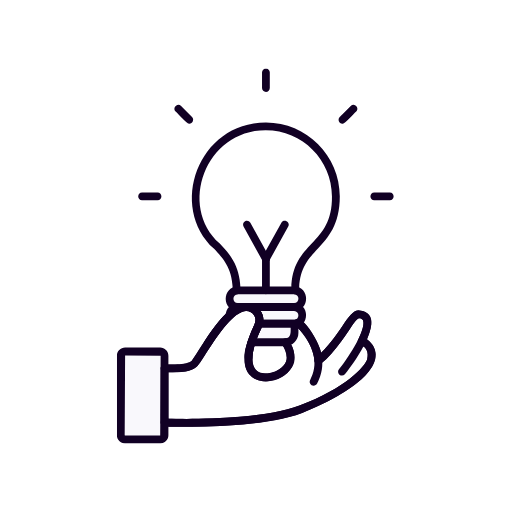
UI Kit Creation
Reusable components and assets that reflect your brand’s visual style for consistent interface design.
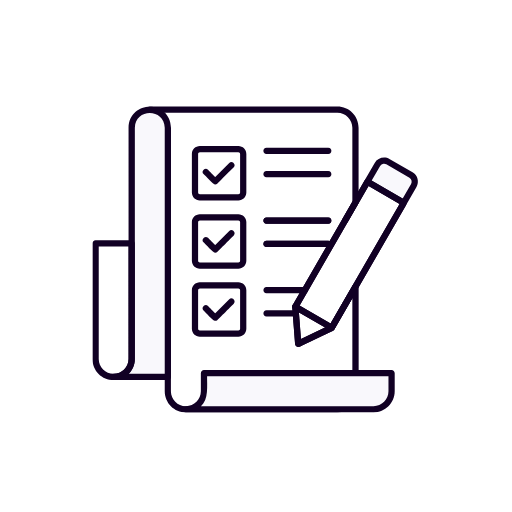
Design Tokens Setup
Define scalable spacing, typography, and color tokens for dev-friendly, themable design systems.
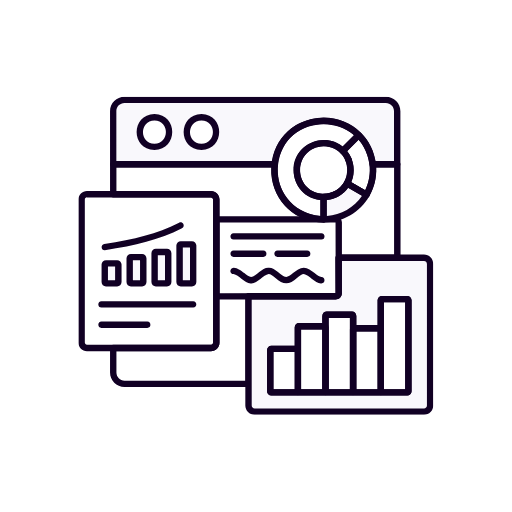
Figma System Libraries
Centralized, collaborative libraries in Figma that align design and development workflows.
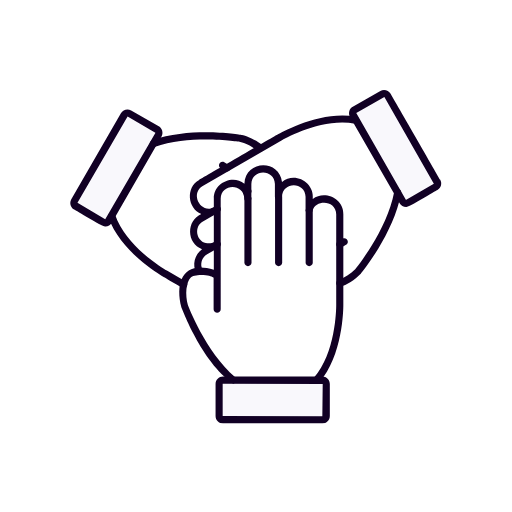
Design QA Support
We help QA teams validate component behavior across browsers and responsive breakpoints.

Accessibility Integration
Embed WCAG-compliant elements to make your design system inclusive from day one.
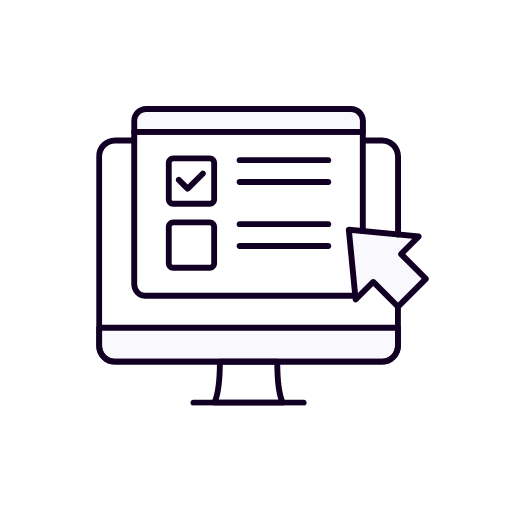
Front-End Integration
We sync with dev teams to ensure design tokens and components are deployed cleanly in code.
Design System Development
Design System Development in Dubai
In the ever-evolving digital landscape of Dubai, building design systems has moved from a best practice to a fundamental necessity. As businesses scale across platforms and customer touchpoints multiply, consistency in design becomes paramount. Octopus recognizes that in Dubai—a city synonymous with ambition, scale, and innovation—a design system isn’t just a set of rules. It’s a strategic infrastructure that aligns visual identity, brand voice, and technical functionality into one scalable framework. Whether you are a government portal serving millions or a fintech startup launching a new mobile app, a design system ensures coherence, speed, and adaptability across your digital ecosystem.
The Strategic Importance of Design Systems
At its core, a design system is a single source of truth for design and development teams. It houses components, style guides, pattern libraries, and coded elements that define the user interface and experience. In Dubai, where user bases are diverse and expectations high, design systems serve as the backbone of digital product delivery. They reduce redundancies, eliminate inconsistencies, and streamline collaboration. More importantly, they create a repeatable process that scales. At Octopus, we approach design systems not as a one-time project but as a living organism—built to evolve, adapt, and grow with your product and audience.
Our methodology focuses on marrying the strategic with the functional. We begin by auditing your current digital landscape—identifying inconsistencies, gathering feedback, and defining key use cases. This allows us to build a system that not only looks unified but performs under the pressure of real-world use. From typography and iconography to component behaviors and code standards, every element is codified with intent and flexibility.
Cultural and Technical Relevance in the Dubai Market
Dubai’s market is unique. It is home to a multicultural population, a tech-savvy youth demographic, and a government that is aggressively pursuing digital transformation. Design systems here must cater to multiple languages, accessibility standards, and cultural expectations. Octopus designs with this context in mind. We integrate bilingual capabilities into every component, ensuring that right-to-left (RTL) text alignment works seamlessly alongside left-to-right layouts. Typography choices are evaluated for cross-script compatibility, ensuring both Arabic and Latin fonts maintain brand tone and legibility.
Color palettes are selected not only for brand harmony but for cultural resonance and accessibility compliance. Interface elements are tested on real users from Dubai’s diverse population segments, ensuring usability across age groups, literacy levels, and device types. This sensitivity to context ensures that the design system we deliver doesn’t just work—it works for your audience.
Building Modular and Scalable Components
The heart of a design system lies in its components. At Octopus, we create atomic design systems based on reusable building blocks. Buttons, cards, modals, headers, and forms are designed once and deployed everywhere. These modules adapt responsively, perform consistently, and remain accessible regardless of platform or device. In Dubai’s fast-paced business environment, this modularity reduces development time and speeds up iteration cycles.
Each component in our system comes with coded specifications, usage guidelines, accessibility notes, and examples. These aren’t abstract guidelines—they’re production-ready assets engineered for performance. Whether embedded in Figma, Storybook, or your CMS, our components are built for immediate deployment and future-proofed for growth.
Cross-Functional Collaboration and Integration
Design systems live at the intersection of design, development, and product strategy. At Octopus, we facilitate this convergence through workshops, documentation, and continuous alignment. Our systems are created in tandem with engineering teams to ensure feasibility and scalability. Developers receive version-controlled assets and UI kits with clear implementation instructions.
For larger organizations in Dubai—especially those operating in finance, government, and e-commerce—we implement design systems using Git repositories, package managers, and CI/CD pipelines. This technical maturity ensures that visual updates propagate without breaking functionality. We also create dashboards for tracking usage analytics, identifying gaps, and iterating over time.
Integrating Accessibility and Inclusivity
Accessibility is not optional. In Dubai, where digital inclusion is prioritized by government mandate and social responsibility, accessibility must be engineered from the start. Octopus embeds WCAG 2.1 AA standards into the DNA of every design system. Color contrasts are tested. Keyboard navigation is validated. ARIA attributes are included in code documentation.
But we go beyond compliance. We consider cognitive load, motion sensitivity, and linguistic diversity. Fonts are selected for readability. Form labels are positioned intuitively. Interactive elements provide feedback across modalities—visual, tactile, and auditory. This holistic approach to accessibility ensures that every user—regardless of ability—receives a first-class experience.
Performance Optimization and Testing
Speed is critical. Especially in Dubai, where users expect lightning-fast load times and seamless interactions. Octopus ensures that design systems are optimized for performance at every layer. Components are built with lightweight, semantic HTML. Stylesheets are modular and scoped. Images and icons are optimized for resolution and loading efficiency.
We run automated performance audits using Lighthouse and WebPageTest. We simulate real-world environments using tools like BrowserStack. These tests reveal how your UI behaves under variable network conditions, across different browsers and devices. Insights are used to refine the design system before deployment, ensuring that it performs as beautifully as it looks.
System Governance and Documentation
A design system is only as strong as its governance. Without clear rules and documentation, adoption falters and consistency breaks down. Octopus provides comprehensive documentation—spanning usage guidelines, accessibility instructions, coding conventions, and governance models. This enables teams in Dubai and beyond to adopt, extend, and evolve the system without ambiguity.
We also train internal teams through workshops and webinars. This includes product managers, designers, and developers—ensuring everyone speaks the same language and understands how to contribute responsibly. For enterprise clients, we implement design system portals—customized web interfaces where all assets, documents, and updates are housed.
Localization and Globalization
Dubai is a regional hub with global reach. Brands here must localize content for Arabic-speaking audiences while maintaining a global visual identity. Octopus ensures that your design system supports multilingual expansion, language toggling, and cultural adaptability. We conduct linguistic QA, right-to-left formatting validation, and script styling.
More importantly, we design with narrative empathy. UI flows are adapted for cultural relevance. Icon sets reflect regional nuances. Content tone is adjusted without losing strategic consistency. This makes your design system not just a technical asset—but a bridge between markets, audiences, and user contexts.
Maintenance, Versioning, and Continuous Improvement
A design system is not a one-off deliverable. It evolves. As your brand grows, as new devices emerge, and as design trends shift, your system must adapt. Octopus implements versioning protocols using semantic release tagging. Each update is logged, documented, and communicated across teams.
We also establish feedback loops using analytics dashboards, stakeholder reviews, and user testing. When a component underperforms or a need arises, we act quickly—updating the system, testing in sandbox environments, and deploying safely through CI/CD pipelines. This agile maintenance model ensures your system remains relevant, performant, and reliable.
Case Study-Inspired Prototypes and Pilots
Before full-scale implementation, Octopus creates pilot systems or prototype libraries tailored to a segment of your brand or product suite. These prototypes serve as proof of concept, aligning stakeholders and validating assumptions. We test user interaction, visual appeal, and code efficiency in controlled environments.
In Dubai’s fast-moving sectors like hospitality, fintech, and logistics, these prototypes provide tangible results fast. They reduce risk, inspire confidence, and provide the basis for scalable rollouts. Every system we develop is informed by case studies, competitive analysis, and sector benchmarks—ensuring relevance and readiness.
The Future of Design Systems in Dubai
Dubai is not standing still. The rise of AI, voice interfaces, and spatial computing demands that design systems become more intelligent and adaptive. Octopus is already building future-ready frameworks that accommodate these paradigms. We are exploring AI-generated components, voice-friendly UI tokens, and 3D asset libraries.
More importantly, we believe in systems that empower—not restrict—creativity. Our design systems are flexible enough to accommodate innovation, yet strict enough to preserve consistency. We don’t just prepare you for today’s challenges—we equip you for tomorrow’s opportunities.
The Octopus Advantage in Design System Development
Octopus delivers more than templates or style guides. We build design systems that enable speed, scale, and success. In Dubai’s demanding environment, where digital transformation is measured in months not years, our systems provide the clarity and control needed to lead.
Through strategic discovery, technical execution, and cultural insight, we create systems that serve as both product foundations and innovation accelerators. We build with discipline. We design with empathy. We deliver with purpose. If your brand is ready to unify its digital experiences and empower its teams, Octopus is ready to architect the system that will get you there.
Let's get started
Don't get left behind
Stay ahead of the competition with ReachOut – don’t get left behind.

Got a question? Get your answers
Quick answers to questions you may have. Can’t find what you’re looking for? Check out our full documentation.
01. How does digital marketing help to grow your business?
At Octopus, we help businesses grow by attracting the right audience, converting leads efficiently, and building long-term customer value through targeted, data-driven digital strategies.
02. How is digital marketing different from traditional marketing?
Unlike traditional marketing, digital marketing is trackable, highly targeted, and optimized in real time — delivering measurable results, faster ROI, and deeper engagement.
03. How does digital marketing help small businesses?
We empower small businesses to compete with larger brands through affordable, scalable solutions like SEO, social media, and email automation that drive growth on any budget.
